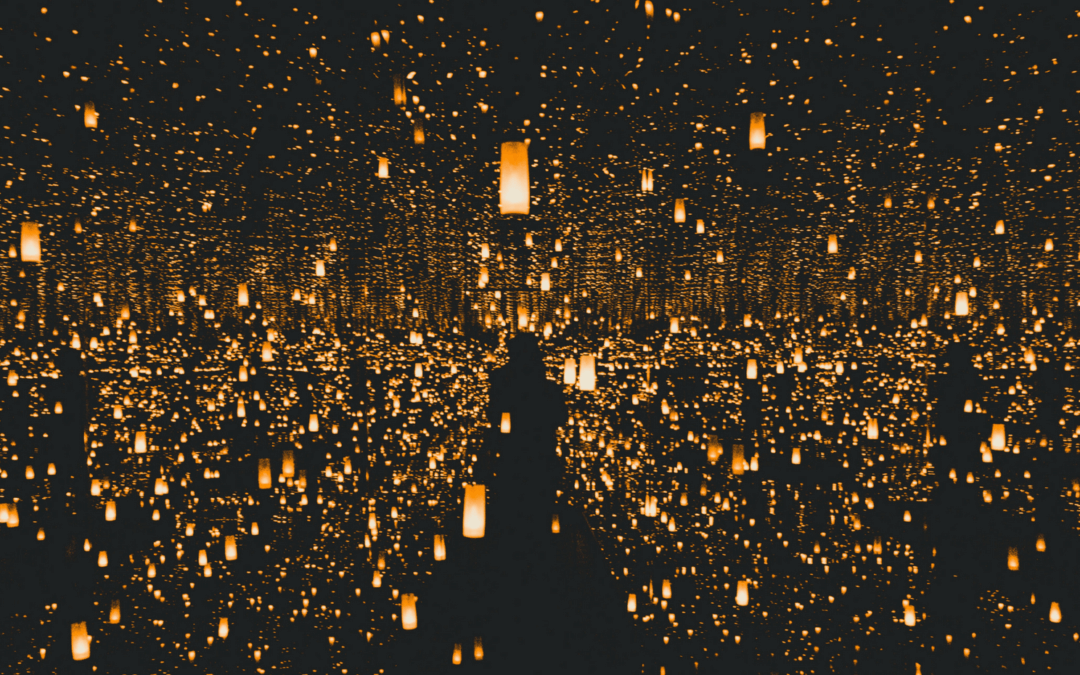How to Light Your Yoga Videos on the Cheap
If you want to create professional looking videos for your virtual studio, good lighting is mission critical.
Lighting is an art form that can seem intimidating when you’re first starting out as an online teacher. (For many of us, chatting happily into an iPhone camera feels worlds different than filming in a studio with a big, bright, professional lighting setup.) But there are some super simple yet effective ways to get the best lighting for filming fitness videos. And many of them can be implemented without taking multi-week photography classes, spending a fortune on equipment, or creating a blinding environment for you and your students.
Your Baseline Lighting Goals
The easiest—and arguably best—type of lighting for your DIY videos will be natural light. If you can film outside or in a room with lots of windows, morning or evening light can be excellent on its own. The best strategy is to face your primary light source (instead of having the source behind you) so that the daylight shines on your face and immediate surroundings. With the light behind you, you will appear backlit (too dark).
But sometimes natural light isn’t available, convenient, or sufficient (Hello, Seattle-in-December!). And when you are forced to add artificial lighting sources to your video shoots, you’ll want to keep these three simple goals in mind:
Make the featured speaker look fabulous (prioritize lighting yourself or whoever is demonstrating the poses in your video).
Make your setting look welcoming and natural.
Eliminate shadows, especially on people’s faces.
To be perfectly honest, anything you can do to nail these goals is completely fine! We’ve got some tips and recommendations to share, but feel free to improvise with the tools you have at hand. So long as your shot looks natural and relatively shadow-free, you’re golden.
How to Eliminate Shadows in Your Videos
The first step toward getting rid of shadows is to notice them. When we’re going about our daily lives, it can be easy to overlook how light is falling across faces and through rooms, but as a newly-minted videographer, you need to become attuned to their placements and behaviors. One quick and easy way to test for shadows is to take a photo or quick video with overhead lights on, and then off.
In most cases, a lighting source placed directly above a subject will create harsh, noticeable shadows below the eyes, and sometimes under the nose and chin. If you have unusually high-set windows, they may have a similar effect and need to be blacked out with black plastic and gaffer’s tape (both of which can be picked up at your local hardware store).
Here’s how to light a shot that will be mostly shadow-free:
Place two lights on either side of your subject, just above the eye line. These lights should sit a little bit in front of the camera lens, to create what’s called “flat lighting.” There may be some variation if you’re shooting a tutorial with poses instead of facing the camera the entire time, but this setup will still be helpful even if you’re moving around the room a bit.
Use a large bulb or light source. The larger the source, the softer and less harsh the lighting. If you need to use a small bulb, put a diffusion filter in front of it. (More on that shortly.)
Incorporate natural light if you can, but block it out if it messes with your shot. Have your video subject face any windows if possible. Side windows may need to be blacked out.
Basic Equipment for a Well-lit Video Shoot
If you are planning to film yourself or another teacher (rather than a full studio yoga class), you can rig up a simple and inexpensive indoor lighting kit for less than $100. Most of these items are available at your local hardware store, and once you’ve got them you can build your teaching “stage” in under an hour.
Here’s your shopping list:
2 clamp lights, about $14 each
2 spring clips, about $5 each
2 dimmable daylight LED bulbs (buy a variety of wattage options for flexibility), $6 each
2 12-foot extension cords, $3 - $5 each
1 white, medium-heavy shower curtain, $3 - $6
Package of clothespins, $3 - $5
Lamp dimmer, $12 - $15
2 lighting stands, $25 - $30 for a set of 2
You probably won’t be able to find the lighting stands in person, but they can be ordered online. (And while the clothespins are ideal, you may be able to use binder clips from your home office.)
To set up, clip the clamp lights to the top of your stands, then secure them with the spring clips. (The built-in clamps are a good start, but not terribly sturdy on their own!) Try out your bulbs and determine how bright you want your light to be. Then cut two squares from the shower curtain, and clip them in front of the bulbs to help diffuse and soften the light. Plug your lights into the dimmer so you can control the amount of light more precisely. Then place the two lights about four feet apart from each other and slightly in front of the camera, and start filming!
Adding a Third Light Source
You may find that two front-facing lights still add some shadows, depending on your position within the frame. In some cases, this is unavoidable. But if you’re shooting a video that involves simple narration while looking directly into the lens, you can add another light to chase those shadows away. You’ll need to be:
Relatively stationary
Framed from the chest up
Standing in front of a wall or seamless backdrop
If those criteria are met, you can position a third clamp light on a third stand just behind you, facing the wall, at about waist height. This will get rid of any shadows that would otherwise fall onto the background wall or surface.
Don’t Be Afraid to Experiment!
Again, putting together an affordable and versatile lighting kit can be done for $100 or less, but depending on your studio setup, it may not serve all your needs. So play around! Move some lamps into the periphery. See how overhead lights affect your wider shots. Add pieces of the shower curtains over windows if ambient light feels harsh. We’ve covered the basics of simple, inexpensive lighting in this article, but there are infinite ways to tweak your own lighting and we definitely want you to feel free to explore them. Trust your gut, play around, and have fun.
(This post contains affiliate links, which means that we receive a small percentage of what you pay for the products, programs, or services. Your cost is no higher. We would never link to any product or program that we wouldn’t fully back or purchase ourselves.)


